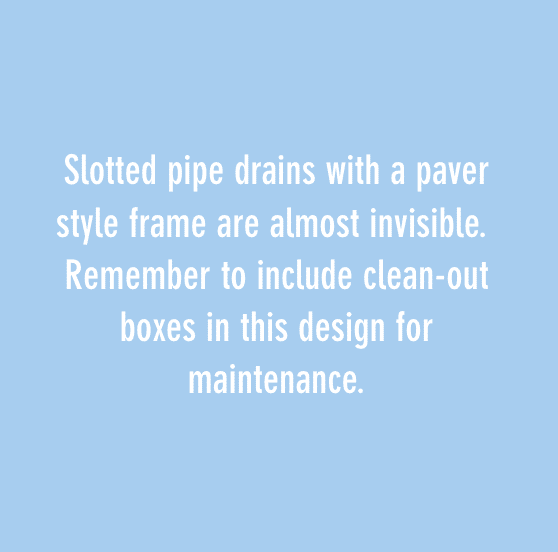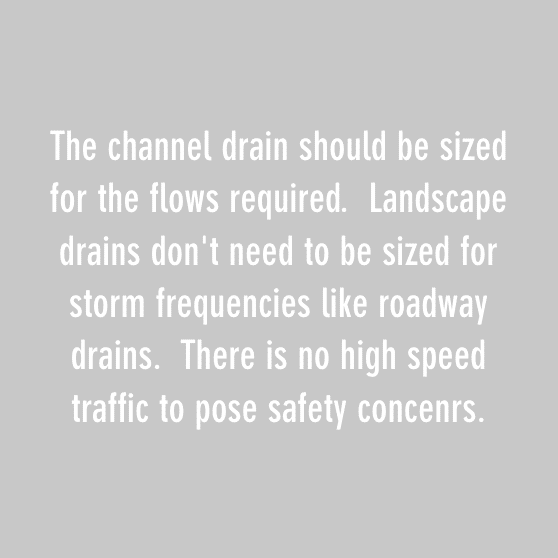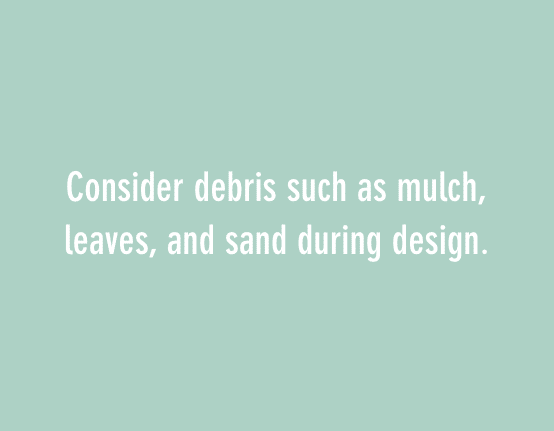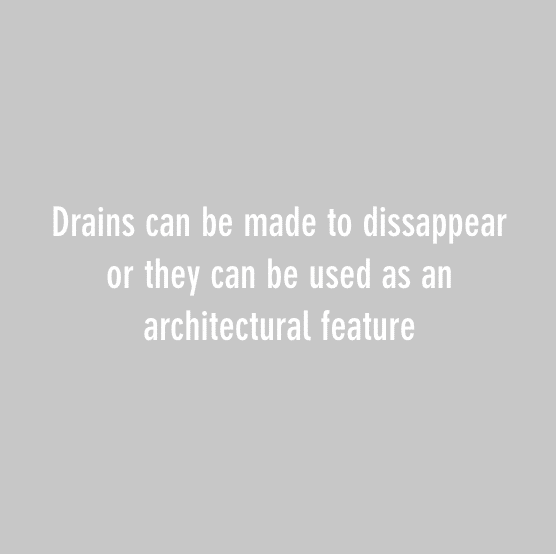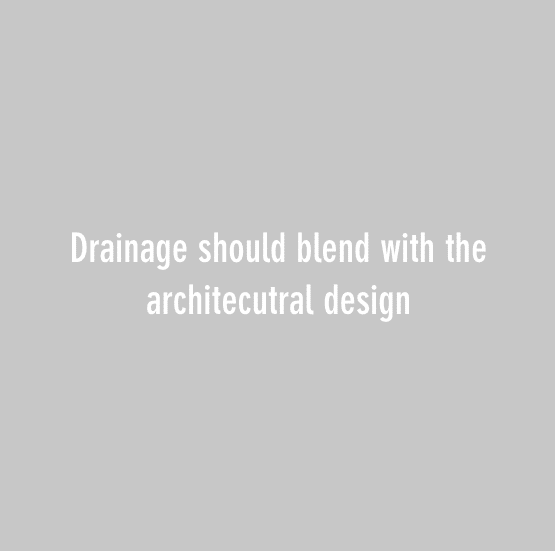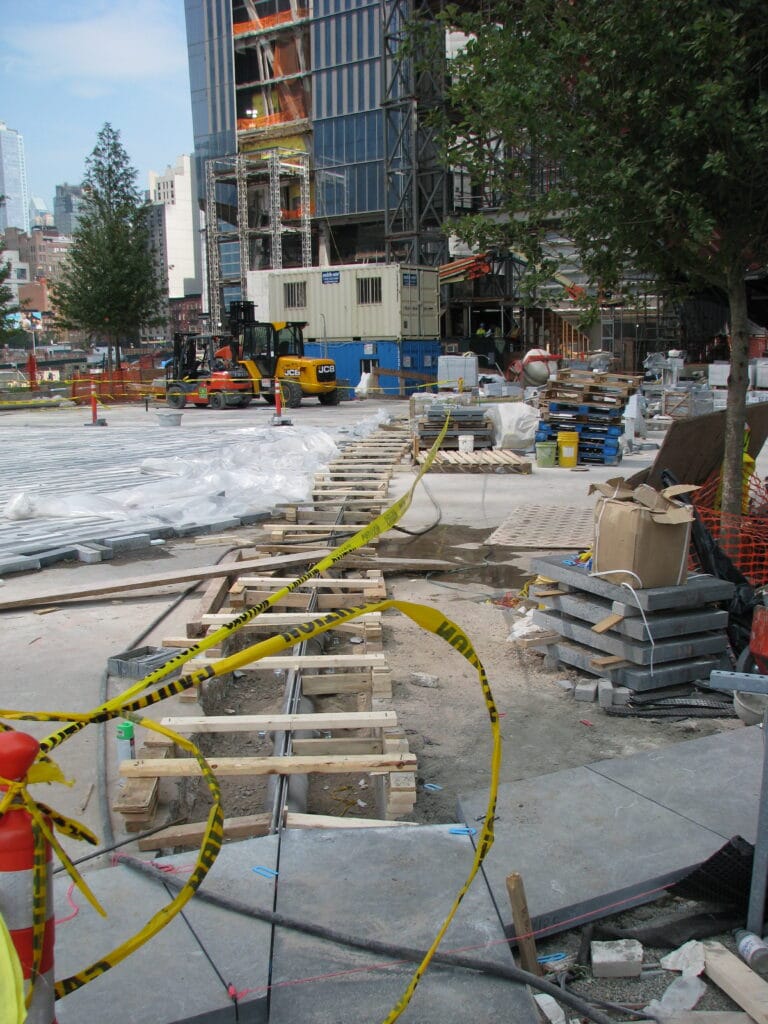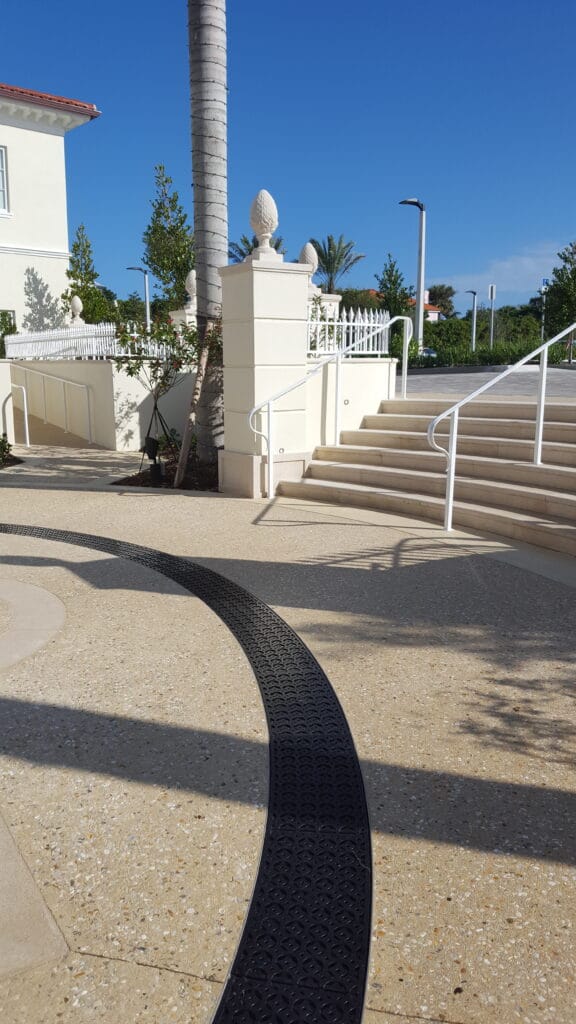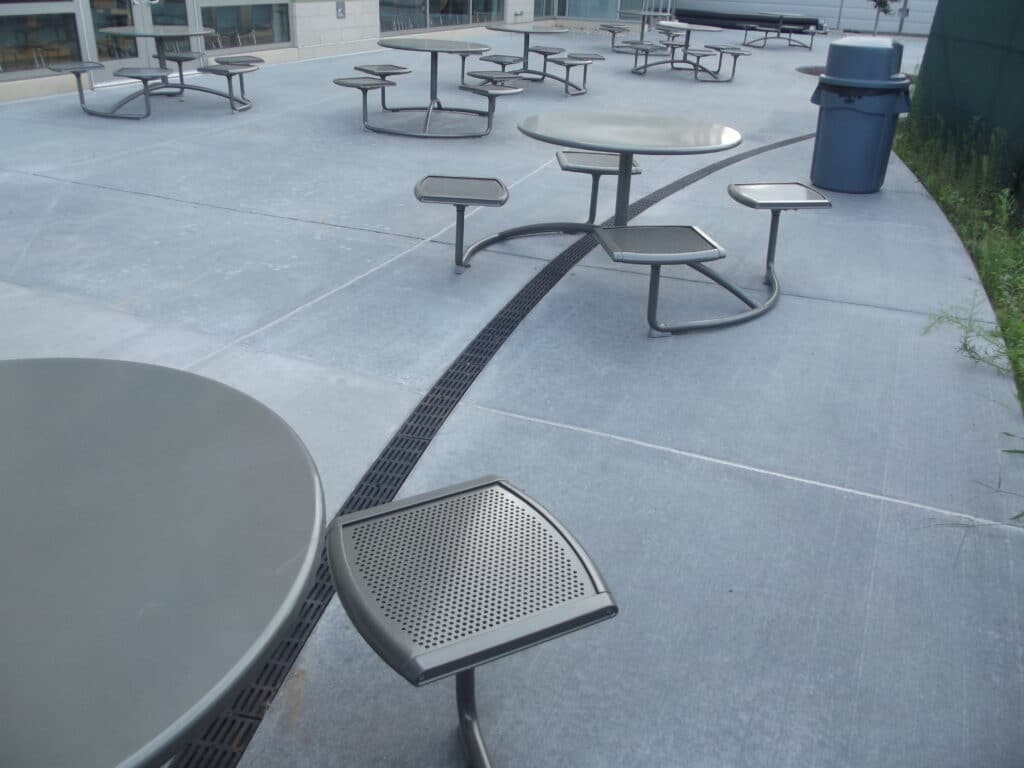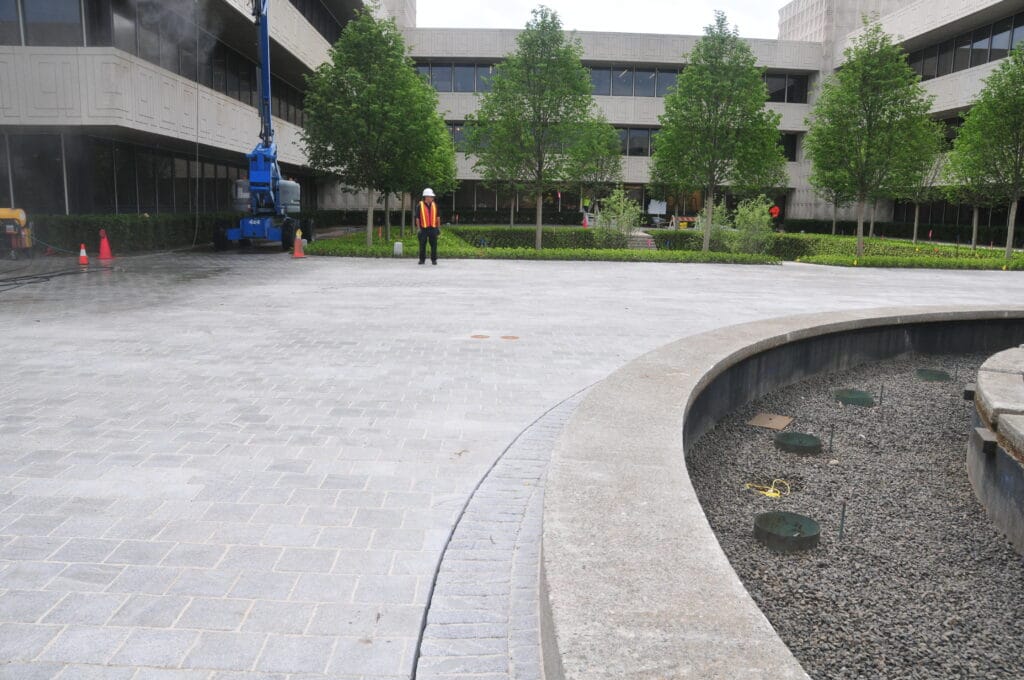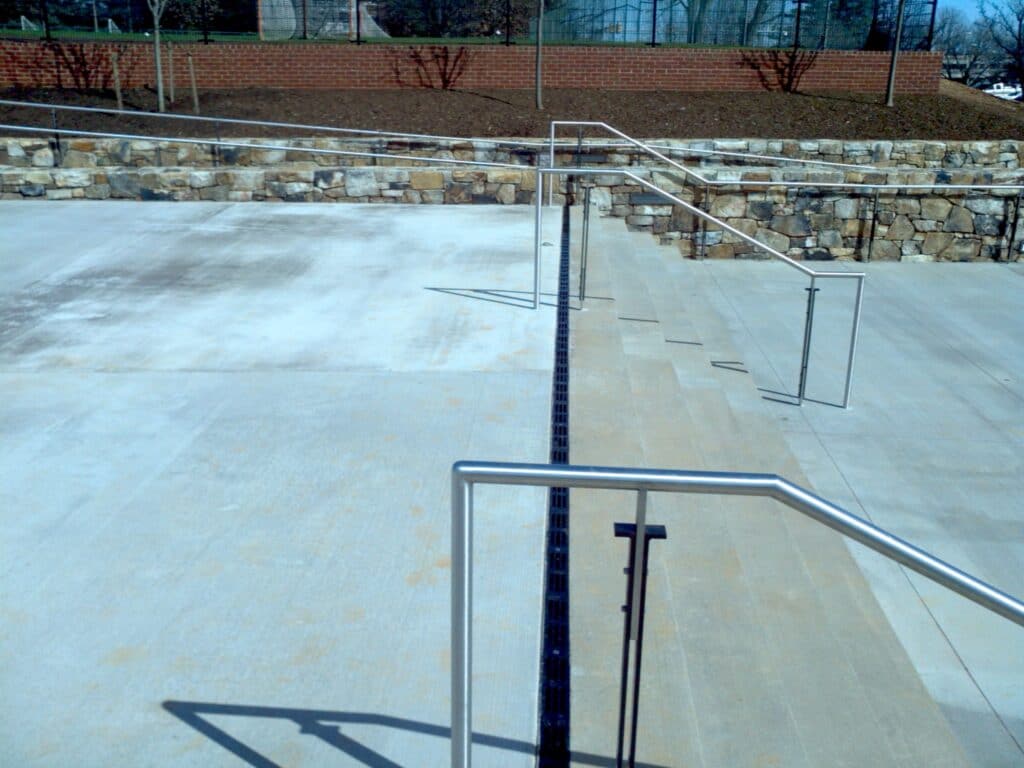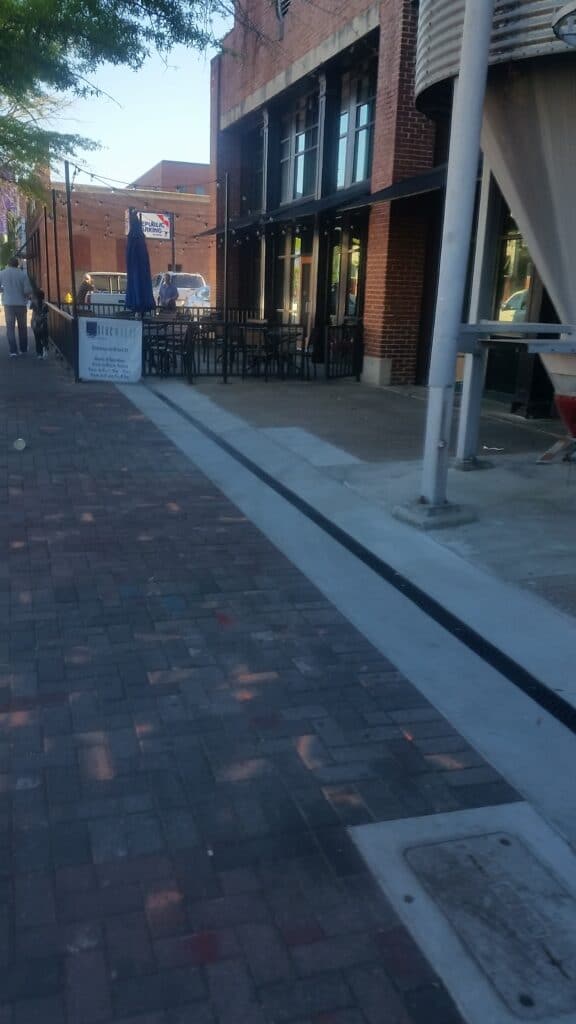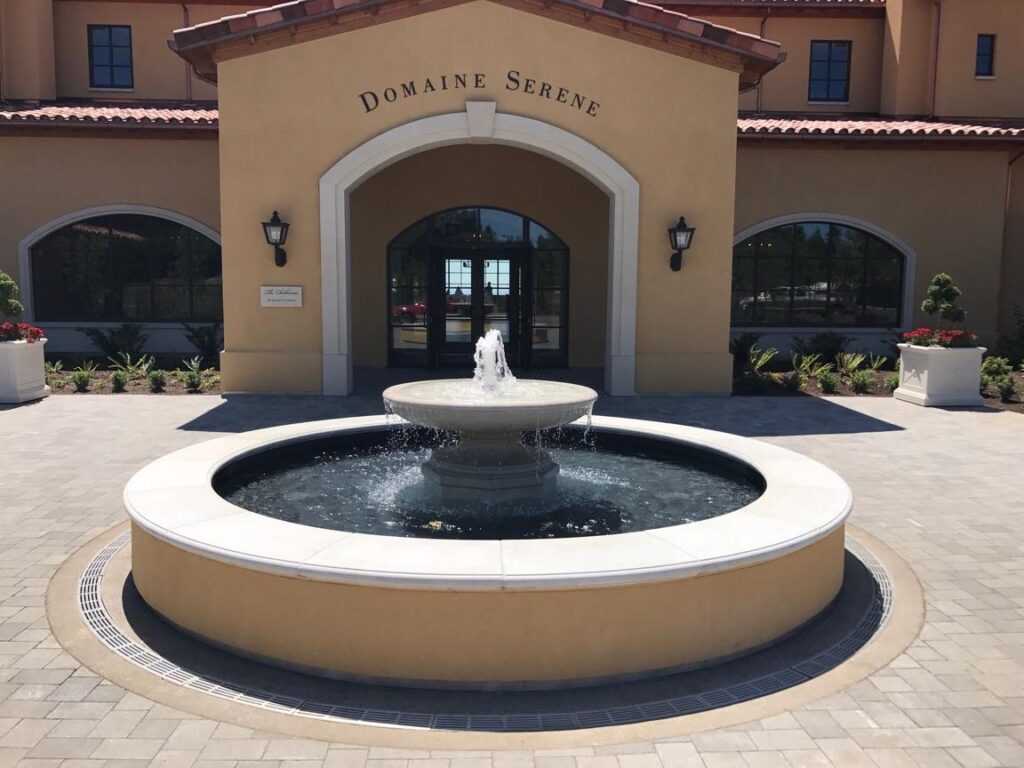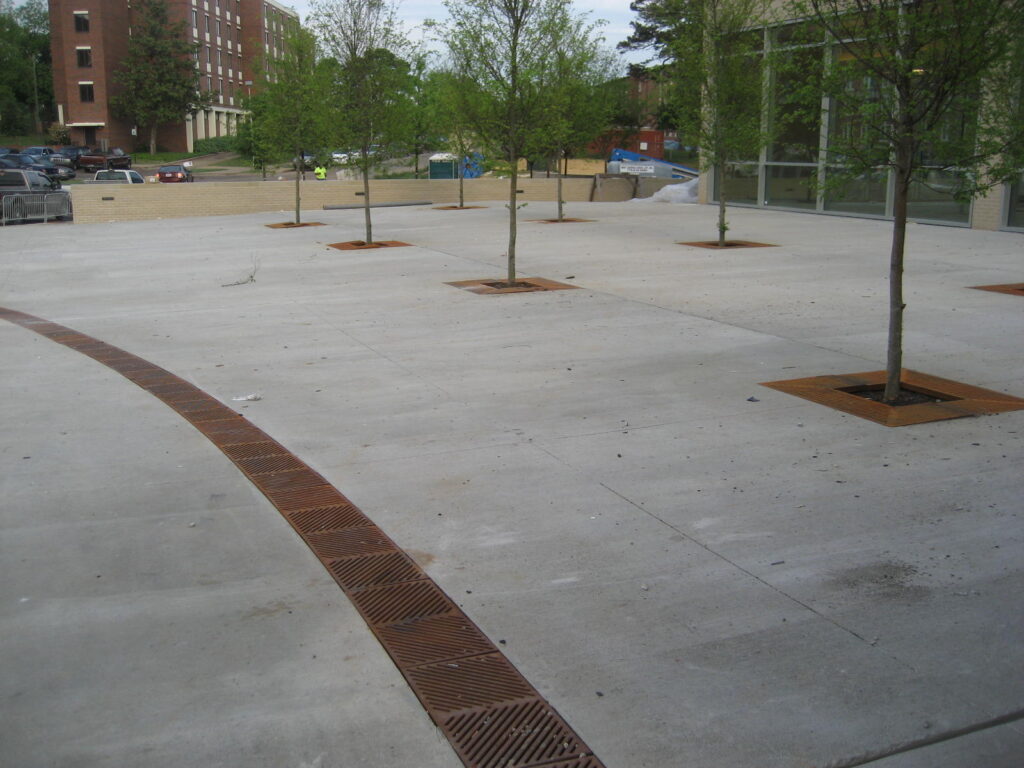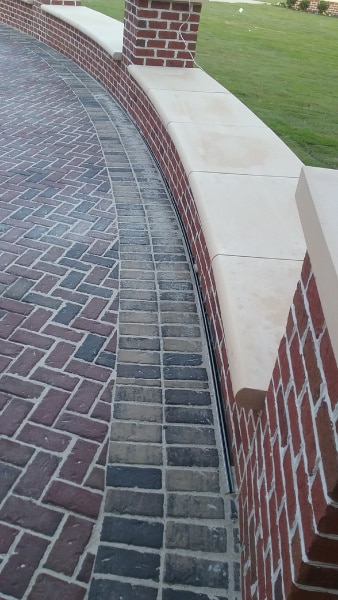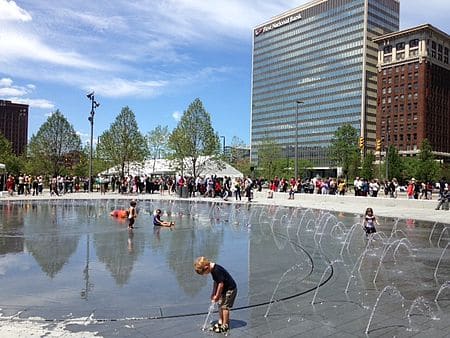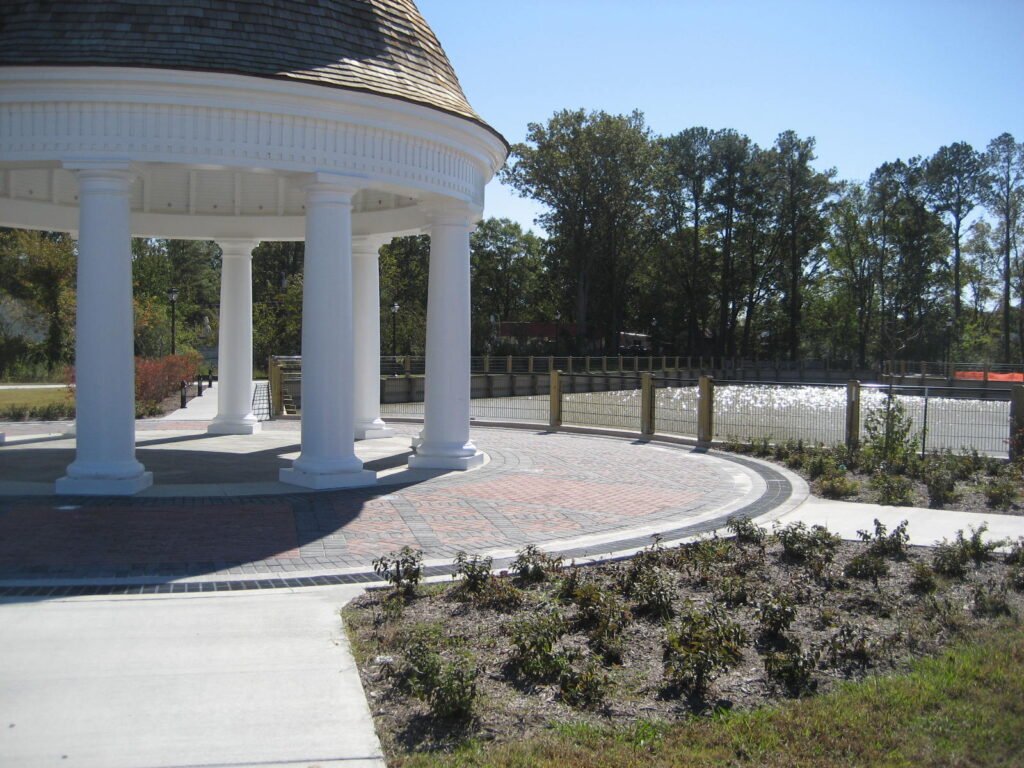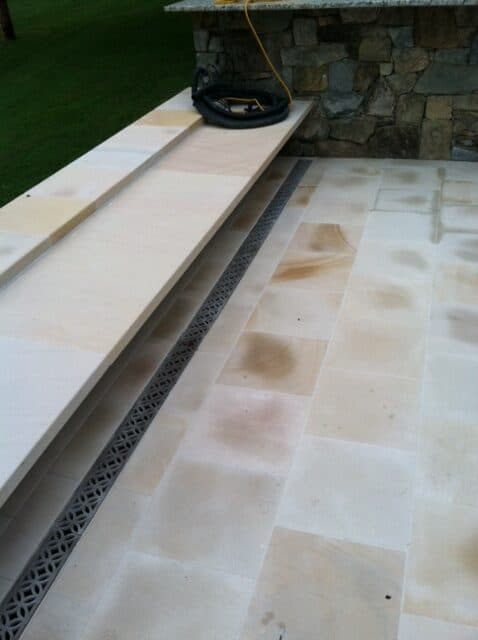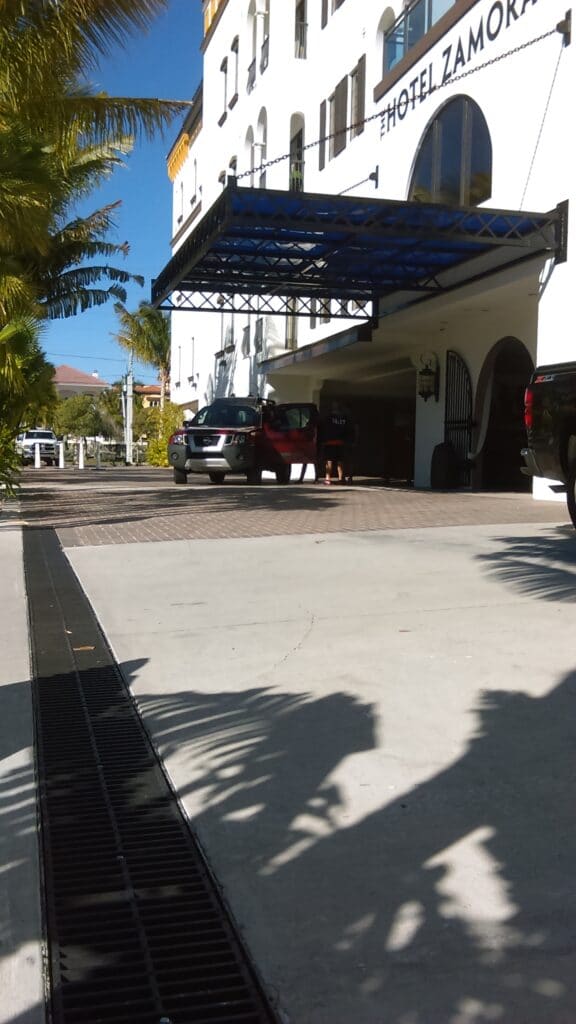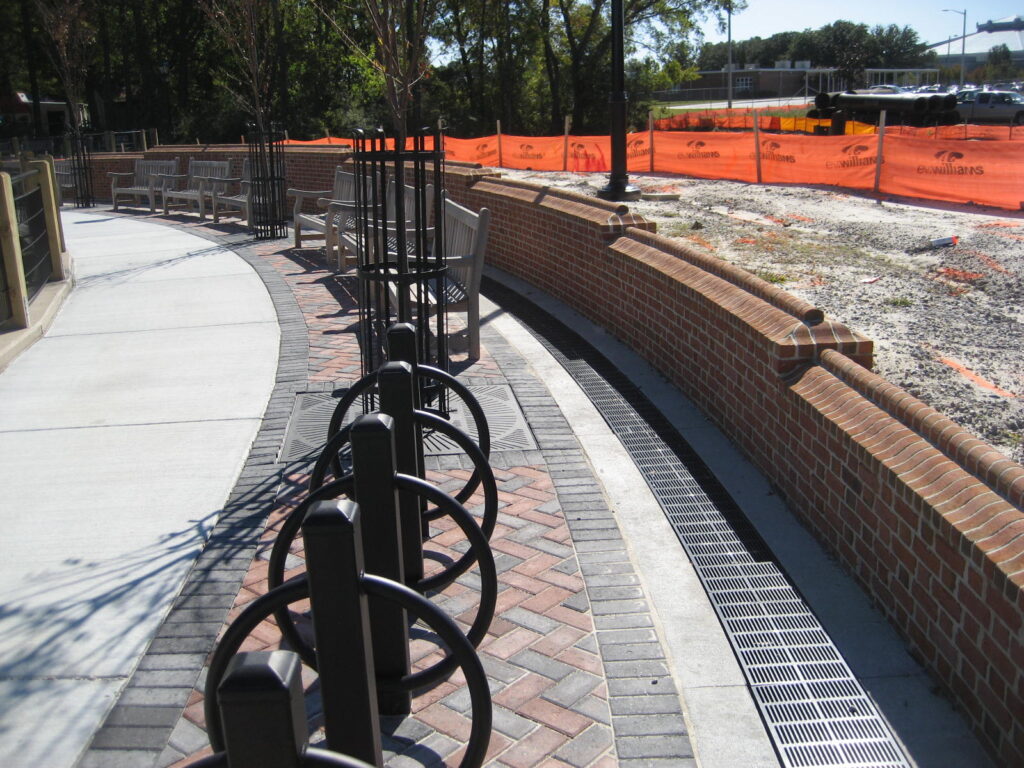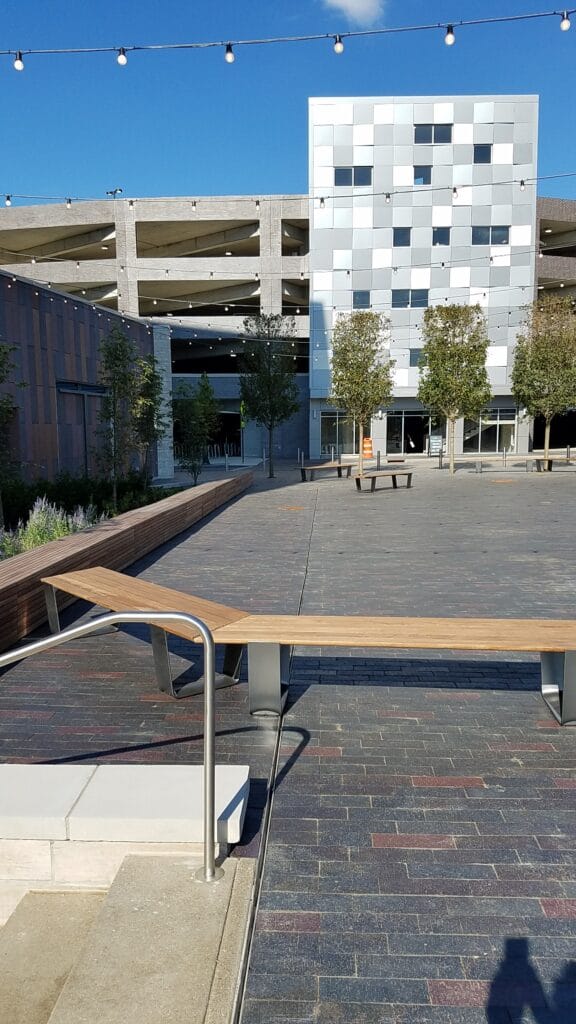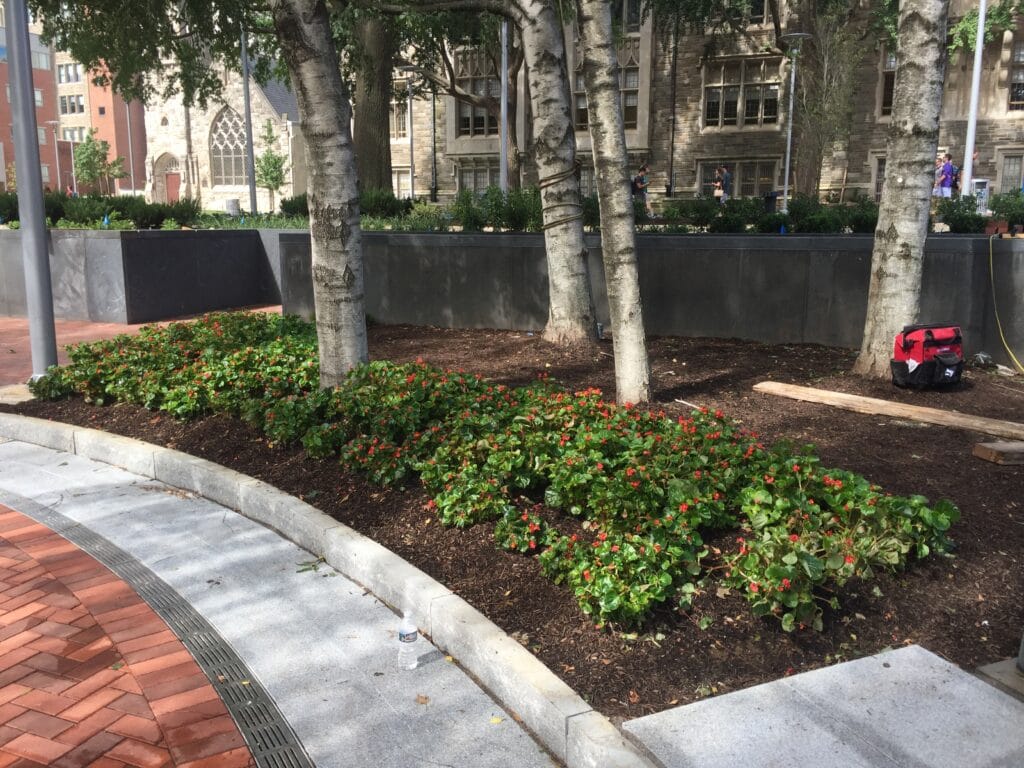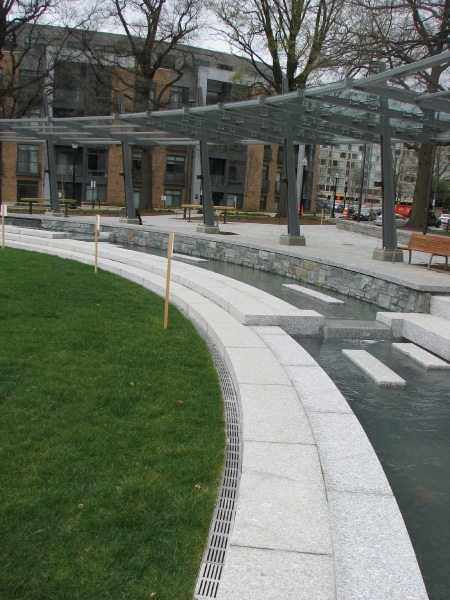Design Considerations
Sizing the drain
- Drain size can vary greatly in these applications so be certain of the flow requirements and debris loading when selecting a product.
- Design trench drains to flow at capacity as much as possible to achieve higher velocity flows in trench and flush debris out of the system
- For more details on properly sizing trench drains go to hydraulics.
Choosing the channel
- Typically a precast trench drain system is used in these applications for the ease of installation. Light loading does not warrant a heavy duty trench channel or frame. Fiberglass or plastic bodies are typically used.
- Pay close attention to the exposed frame at the top of the system to ensure the color and material match with the grate style that is chosen.
- Sealing channel joints is not critical unless chemicals will be entering the trench drain. If you do have chemicals you will want the joints properly sealed. If you want this done properly you must specify the sealant method and stress to the contractor that this be done properly. Metal channels should be welded water tight with a continuous bead. Polymer concrete and Fiberglass channels should be properly prepared by roughing up the joint and then using an appropriate two part sealant. HDPE channels should be welded together with a continuous heat welding process.
- Applications that will see severe temperatures or changes in temperature should have similar thermal coefficients of expansion to that of the surrounding concrete encasement. One of the most prominent failure mechanisms for trench drains that receive foot traffic only is due to differing thermal coefficients of thermal expansion (especially when long trench runs are involved). When the channel grows at a different rate than the surrounding concrete the channel material is stressed and eventually will fail. This is always a factor outdoors and sometimes inside if fluid temperatures are elevated. For more information see material properties.
- Make sure that the outlet properly matches the design flow capacity.
Selecting the grate
- Be sure that your loading is only pedestrian. Hand trucks, carts, wheeled luggage, and constant high heels can place more severe loading on the system and require a heavier duty system.
- Aesthetics are a factor in many designs and can be handled with several custom options such as custom cut grates, etched grates, custom finishes (such as nickel or bronze finishes), or custom materials. You may want to select a heavier duty grate than needed based solely on how it looks.
- Grates should be ADA compliant in any public building. ADA requires that the grate spacing be no more than 1/2″ wide in a perpendicular direction to the primary travel direction.
- Heel proof is another term that is common in the industry. This term is generally accepted as 1/4″ wide openings. Note that the smaller the hole the more likely it is to get clogged. When selecting a heel proof grate the open area is very critical. The more open area, the less likely it is to get completely clogged. Heel proof grates should be avoided when catching water moving rapidly across steep slopes.
- Ensure all grates are properly locked into place. In areas where theft is a concern or where grates are particularly expensive you should insist on a tamper proof locking device.
Designing the layout
- The layout can be simple or quite complex depending on the job specific requirements.
- On long exterior runs take multiple bottom or side outlets in order to minimize the depth.
- For radius trench drains it is important that you select a supplier before you complete the design. Few companies offer this type of design and the cost will be significantly more. If this cost is not figured properly in the design and bidding phase it can be an issue at a later date.
Considerations for Drains in Patios
Patios will need to have drainage just like a walkway or driveway. You cannot just build a patio without drainage because rainwater and runoff can impact the safety and use of your patio. Even a patio with a proper slope will need runoff and drainage considerations building into it. You would be surprised at the amount of water that can collect in the center of patio areas.
This is one of the considerations that can often be neglected when building patios. You will want to think about slot drains for this application, so that heeled shoes or bare feet do not get caught in the drain. You might also want to lean toward a slot drain to prevent yard debris or tree leaves from clogging your drains.
Patios are often not set up to drain successfully, and everyone has probably seen a patio that was mostly just a reservoir for standing water when it rained. This is not something that you should forget about when building this kind of space, and slot drains can be the perfect solution for this need.
Park Drainage
If you have a park that includes walkways that you are planning drains for, you are probably worried about keeping the area looking natural. This means that trench drains might sound like an eyesore that you do not want to add to your park area.
Slot drains can be perfect for walkways and splash pads near fountains or water features for this reason. You can also choose to use decorative slotted covers that will blend right into the spaces that you are providing drainage to. This will help minimize how noticeable the drains are and keep the area looking it’s best and free of water runoff.
Fountains and other kinds of water features will always need drainage surrounding them as well. This prevents issues with standing water near the fountain and damage to the landscaping at the base of the fountain or water feature. Fountains and other kinds of running water features can actually create quite a lot of water in the air as well as splashing runoff that does need to be handled in some fashion.
One of the most common park drainage issues is often related to water features that are not offered proper drainage. Even ponds and natural-looking areas might need to have drainage near them in the form of trench drains to handle runoff and ponding of water. Any water that is allowed to rest near a pond can lead to issues with mosquitoes and can make it hard to grow most plants near the pond.
Park drainage can require a mixed system of different drainage types, and you will want to be sure that you use the right drains in the right locations in your park. These drains can all collect in a central drainage basin if needed, or they might need to be directed to their own unique holding tank areas that then release water to the city’s drainage system or sewer system.
Pavilion Drainage
These areas can be mixed-purpose and might be partially covered and partially open air. This means that there can be drainage challenges if you do not use slot drains or trench drains correctly. The runoff from the roof of the pavilion will need to be directed toward the right kind of drainage solution so that there are no issues with water pouring off the roof and running under the pavilion.
This is one of the most common areas of a park that needs a mix of different drain solutions, and you will want to be sure that you think about rain runoff as well as potential runoff related to cleaning processes. Pavilions are always going to have a mix of different challenges related to layout and use that will necessitate that you have the right kinds of drains in place for different kinds of uses of the area.
This is a space that will need to be safe for bare feet to pass over the drains that are in place, and you will also want to think about wheeled traffic like wheelchairs or carts in some cases. This might even apply if you have a pavilion-style space at your home.
Pavilions are not always going to handle rain in an ideal way, and you might need to be prepared for water runoff that will spill over off the roof onto the ground. This is where a slot drain at the edges of the pavilion can be a big help to your drainage solution build. Being able to take care of all of the water runoff that could possibly impact your pavilion area is critical to making this common-use area nice to use all the time.
Pick Drains Carefully
There are many kinds of drains that you can use for your park and outdoor space drainage. You do not have to feel locked into one kind of drain for every area. This is not always the best way to install drainage in this kind of area, and you will want to explore all of your options before you start building drainage solutions. There are so many ways that you can add drainage to outdoor spaces, and you will probably need some advice about the ways to make your drainage work best.
Having a consult about an outdoor space can always help you to find the right drainage solution for your needs. The annual rainfall that you will need to expect and the kinds of spaces that you are providing drainage for can impact your drainage installation decisions. There are so many ways to deal with both runoff and pond and fountain drainage that you will want to have some help to install complex drains in a park.
You might not know about some really unique solutions that can make your drainage experience better than ever. This is why an expert can make the drainage planning process so much easier than you would have ever thought. Having access to expert advice can make every step of your installation and outdoor space planning so much better. You will never have to worry about wasting money or having to do things over when you get expert help before you start installing.
How to Choose a Layout
The layout of your drains will have a lot to do with the natural slope of the spaces in question and the design of the items that are built in your outdoor spaces. Decks, patios, and pavilions can impact the way that you install drainage, and you might also want to consider neighboring property runoff and other potential sources of water that might not always impact your park spaces.
Being able to reduce the amount of excavation during installations is really nice, and you will have a much more affordable and seamless installation process if you are willing to draw up some plans and take care of the entire drain installation process all at once. This is always the best way to attend to all the drainage needs of outdoor spaces without problems that crop up later. Being able to install your drains without having to backtrack and dig things back up is always the best way to go.
Drainage installation processes can be easy and painless when they are conducted correctly. There is no reason to struggle with outdoor spaces or try to install your own drainage solutions. You can easily get a quote for the right drainage system for your needs, and you will not have to worry that you have made the wrong choices based on a lack of awareness of the best options. Being able to install drains before you pour patios, build decks, or install fountains can make your overall care of these spaces so much easier in the long run. You will not have to struggle to add drainage to areas that were not designed for it, and you will not need to try to force existing systems to meet your needs when they were not designed correctly to do so.
Drainage is a key element in outdoor spaces to prevent water damage, issues with ponding and mud, and risks of insects like mosquitoes. You will be able to set up the perfect outdoor spaces that are easy to maintain and care for as well as useful year-round with the right drainage. Even lawn areas and plant beds need to have access to the correct drainage to be healthy and useable all year long.
Taking the time to put in a drainage system that works is a critical factor in generating a park or yard space that is beautiful and enjoyable. There are so many reasons that this investment is well worth it, and you will be so glad that you took the time to make sure that your drainage was correct for your needs when you see the results of your planning. Just like anything else, planning in advance is the right way to take care of your outdoor spaces and their drainage needs.

